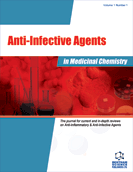Abstract
Despite the availability of antibiotics, infectious diseases become an even increasing threatening for human health, in particular due to resistance development, for example in animal husbandry. Furthermore, the sepsis shock syndrome, which in many cases is a result of the fact that antibiotics may kill bacteria, but do not inactivate bacterial virulence factors such as endotoxins (lipopolysaccharides), is worldwide of increasing importance regarding the very high death rate (40 to 50 %). Therefore, the development of suitable antimicrobial drugs is urgently requested. In recent years, various groups focus on the use of antimicrobial peptides (AMP) derived from natural, innate immunity proteins, which in vivo bind to the virulence factors. Such binding proteins are, for example, lactoferrin, the Limulus anti-LPS-factor, and the family of saposin-like proteins (NK-lysins, granulysins), which all have particular binding domains for example for bacterial endotoxin. Furthermore, an alternative approach to combat infections is the use of cyclooxygenase and lipoxygenase inhibitors. From the reviewed literature the mechanisms of action of antiinfective compounds on bacteria, on pathogenicity factors of the bacteria, and on viruses are summarized. In the last years, considerable progresses have been made in the fight against infections, specially also to overcome bacterial resistance.
Keywords: Antimicrobial peptides (AMP), lipopolysaccharide (LPS), endotoxins, tumor-necrosis-factor-α, cyclooxygenase (COX), lipoxygenase (LOX)
 6
6





















